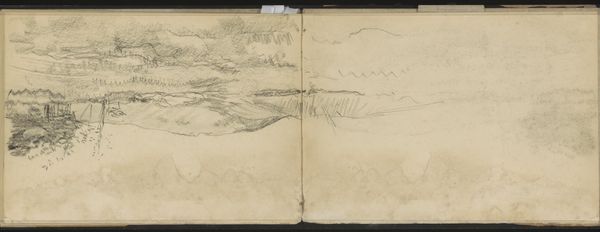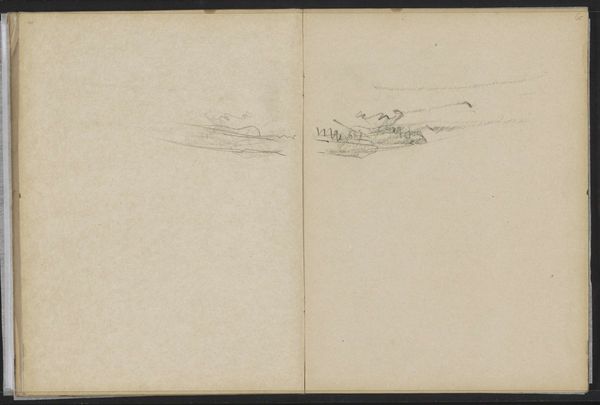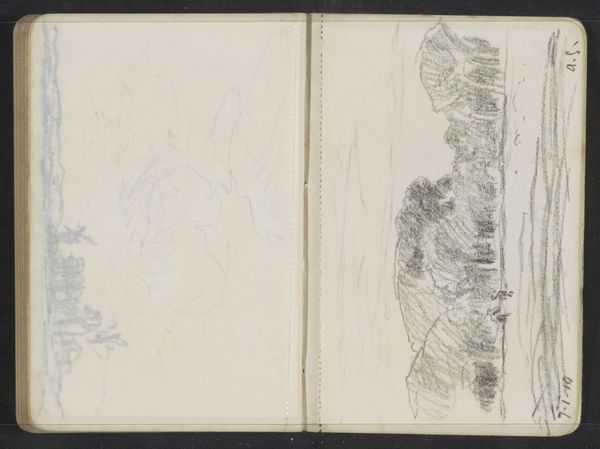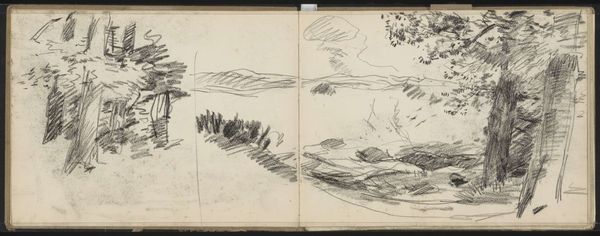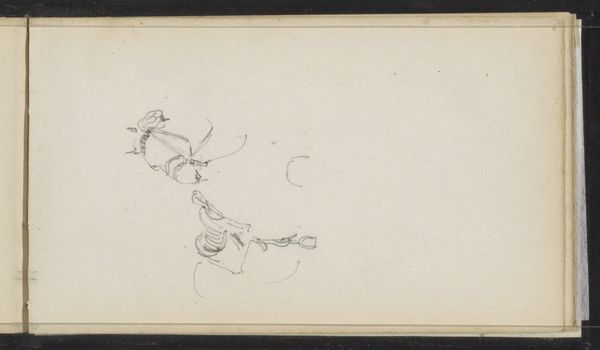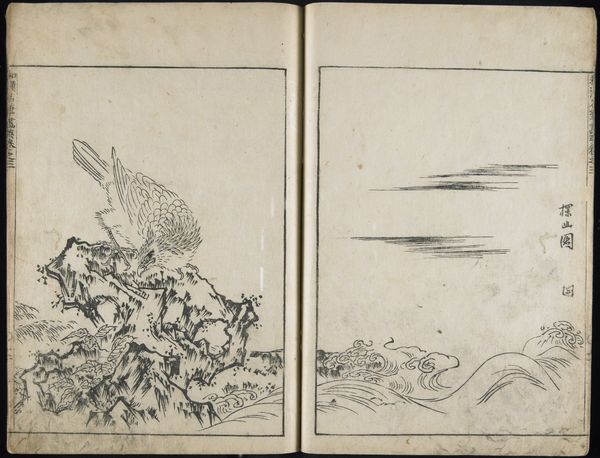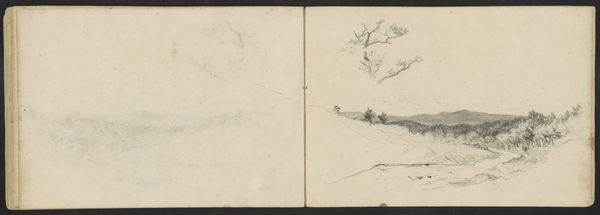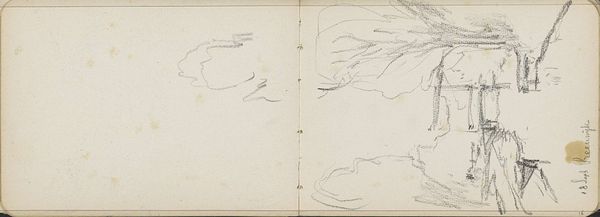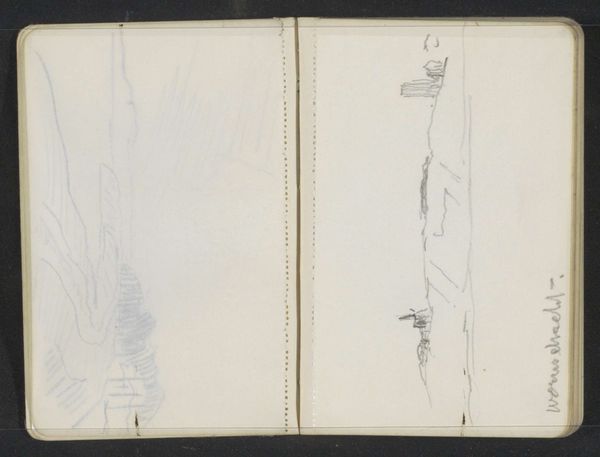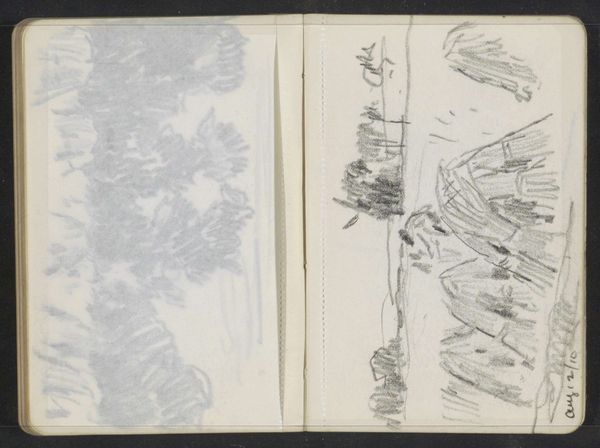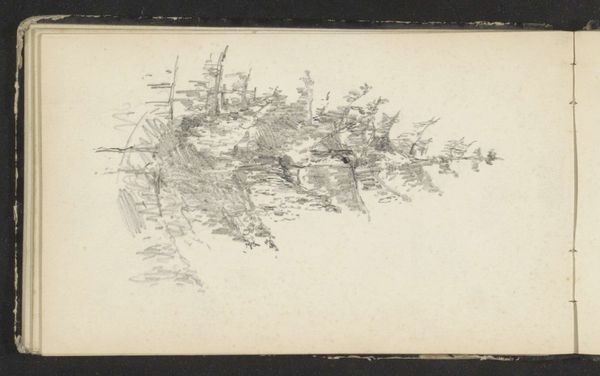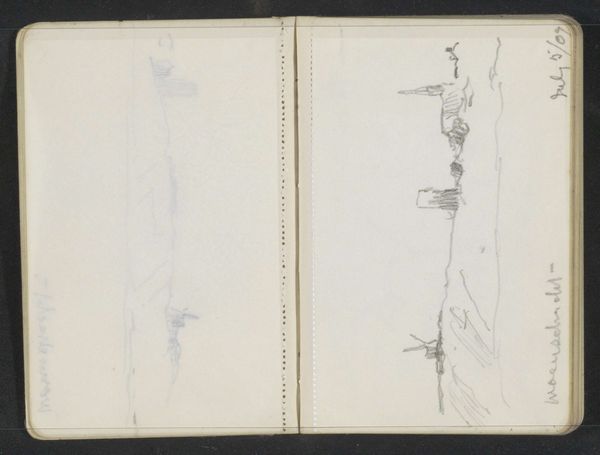
drawing, pencil
#
drawing
#
pen sketch
#
sketch book
#
hand drawn type
#
landscape
#
personal sketchbook
#
sketchwork
#
ink drawing experimentation
#
pen-ink sketch
#
pencil
#
pen work
#
sketchbook drawing
#
sketchbook art
#
realism
Copyright: Rijks Museum: Open Domain
Editor: So, this is Willem Cornelis Rip's "Boerderij in een landschap," dating roughly between 1866 and 1922. It's a sketch, pencil and ink on paper, found within what seems like the artist’s sketchbook. What strikes me is its simplicity; a quick capturing of a rural scene, almost dreamlike. What do you make of it? Curator: Dreamlike, yes. These quick notations are replete with cultural information. Notice the recurring imagery of the farmhouse throughout art history—a universal symbol of shelter, family, and connection to the land. But here, it's presented with such a light touch. Does that tell us anything about Rip's own relationship with those ideas? Editor: Possibly. The sketchiness lends it a fleeting quality, like a memory. Perhaps he’s not grounding us in a literal representation, but exploring an idea of "home." The emptiness of the left-hand page could be purposeful...a visual void against which we perceive meaning. Curator: Precisely! That negative space becomes as important as the farmhouse itself. And what of the very visible marks of the artist’s hand, the unblended pencil strokes? Are we meant to see the *process* of creation, the journey of observing and recording? Think of other landscapes you’ve seen, and what those artists chose to reveal about their methods. Editor: That makes me wonder if this was practice, rather than a finished piece, allowing for freedom of expression...not worrying about conventional depictions of rural life, unlike, say, Millet. Curator: Excellent point. Look how these small drawings in artists' sketchbooks hold such enormous power in reflecting personal thoughts, intentions, or even anxieties that resonate over time. Each line whispers a story. Editor: This definitely shifts my understanding. Seeing the 'sketch' aspect differently changes my approach from appreciating finished artistic expression, to understanding intimate personal motivations behind simple lines and composition of what home may signify to any human being. Curator: Indeed. And through understanding that shift, perhaps you've just grasped the power of a seemingly simple image!
Comments
No comments
Be the first to comment and join the conversation on the ultimate creative platform.
